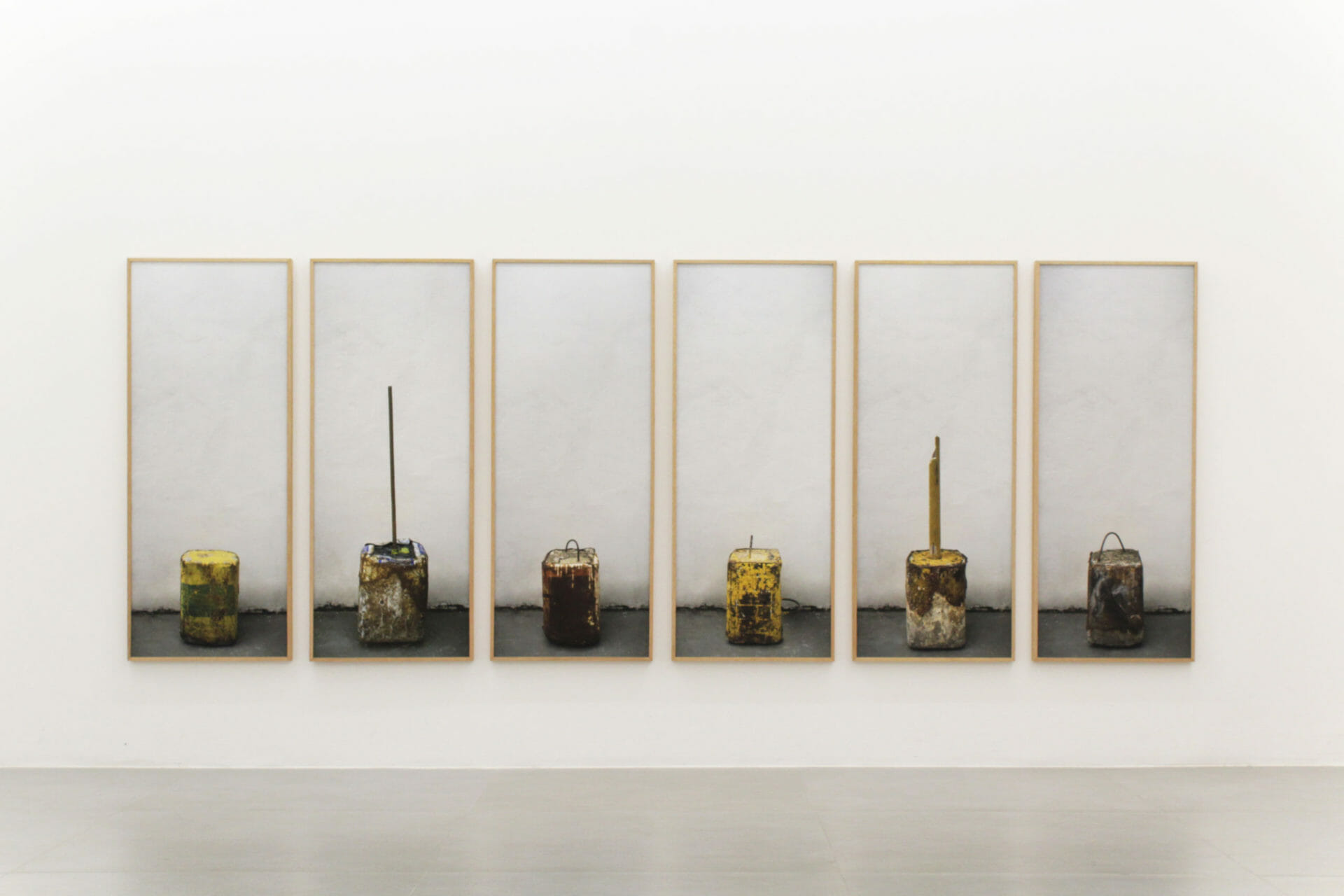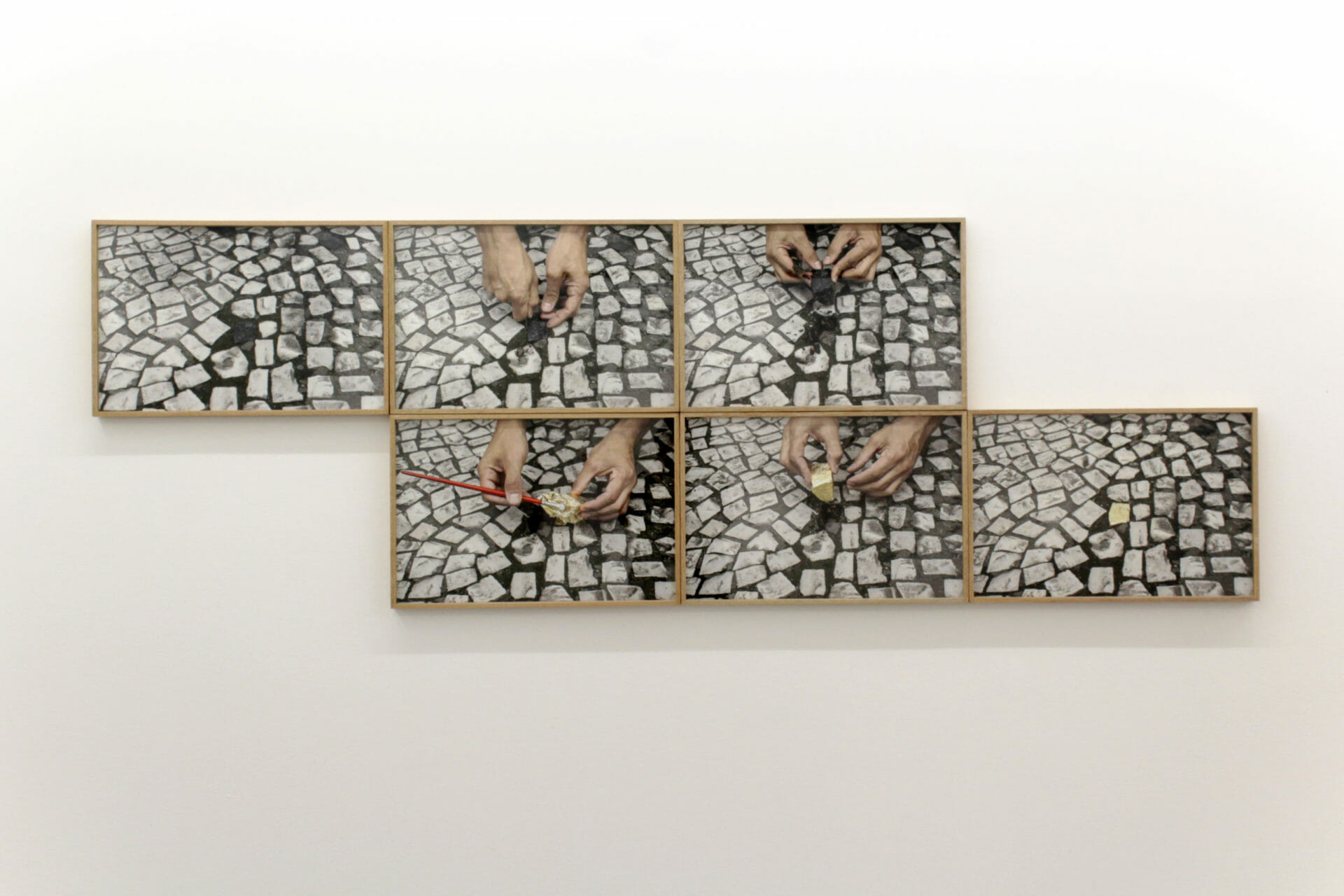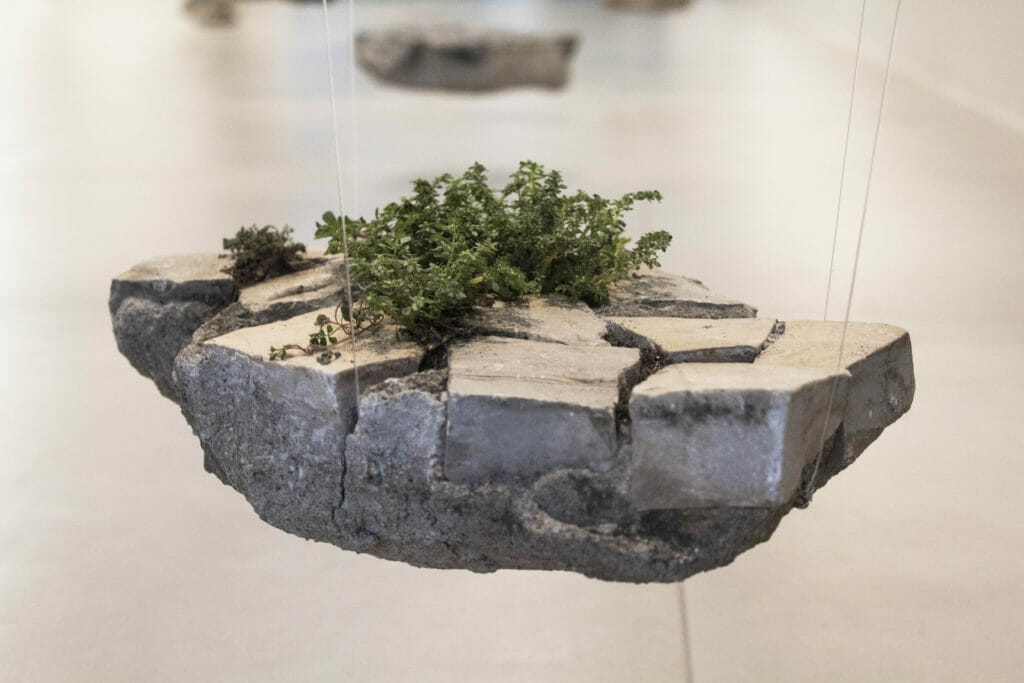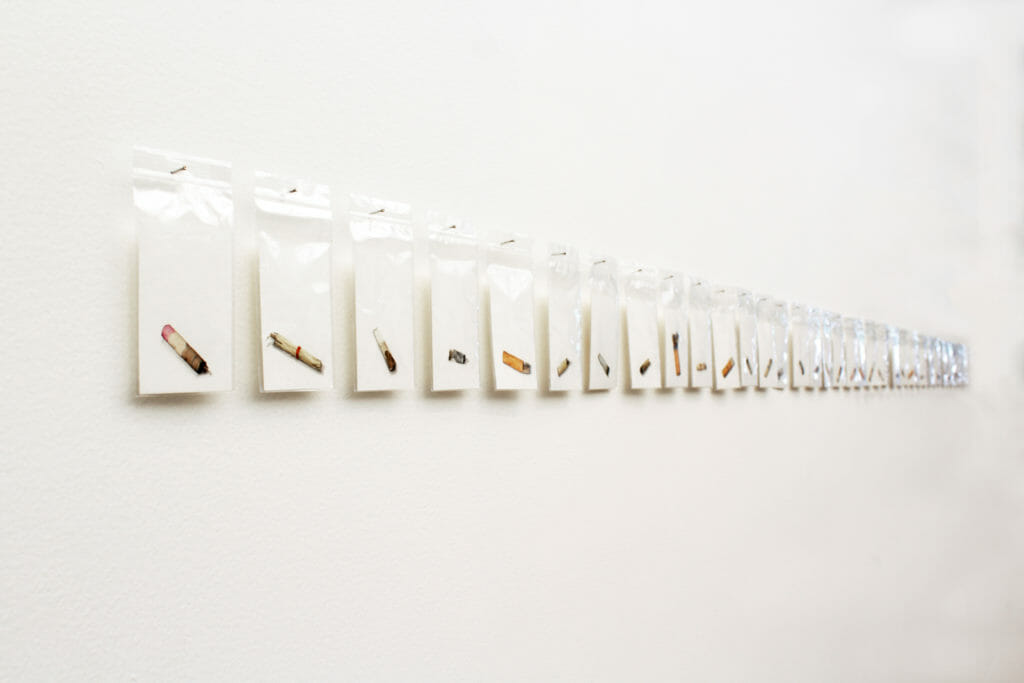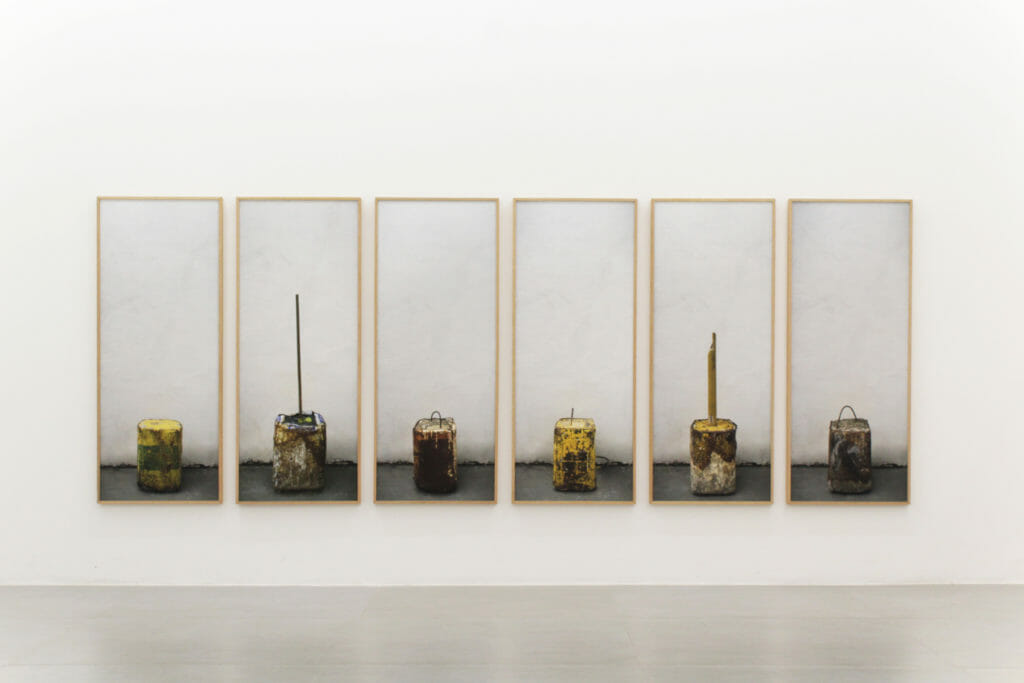Manoel de Barros says: “I learn (more) with bees than with airplanes. I was born looking at the smallest being, the insignificant… I was raised in the woods and learned to like little things on the ground – rather than celestial things”1. The imprint of his poetry is precisely the interest in novelties, waste, garbage, leftovers – all that, in a world currently dominated by consumption, we tend to despise.
In “Ground Floor” Lucas Dupin plunges deep into this universe of the minimal, of tiny things, of the ordinary that passes in front of us unnoticed and brings us closer to elements of our daily life: cigarette butts, elastics, Portuguese stones, or asphalt ascend to the art level. It is in this deconstruction, in the uniqueness given to each object/thing, in which the artist finds the depth in his work. It is, as Lacan suggested, “an object elevated to the dignity of the Thing”2. The artistic sublime cannot only constitute an ascent, but rather a descent to the ground.
The floor is now exposed; a 90-degree movement exhibits the weight of footsteps, inattentive, on the gallery wall. Surprise emerges from our own assimilation of the beautiful: something that would commonly be seen as repulsive is transfigured into allure, fascination. The marks on the asphalt count the time, explain the gestures and write the
stories of those who stepped there.
It is downward looking that the artwork happens, day by day, in the mundane, without reality disguises, but exposing the subtle and showing an unsuspected beauty and singularity. Hence, Lucas Dupin proposes a look deviation, inviting us ourselves to be the tiny thing itself.
Paulo Kassab Jr.
1. Manoel de Barros. A Portrait of the Artist as a Thing.
2. Lacan. Le Séminaire. Free VII. L’Éthique de la Psychanalyse.
